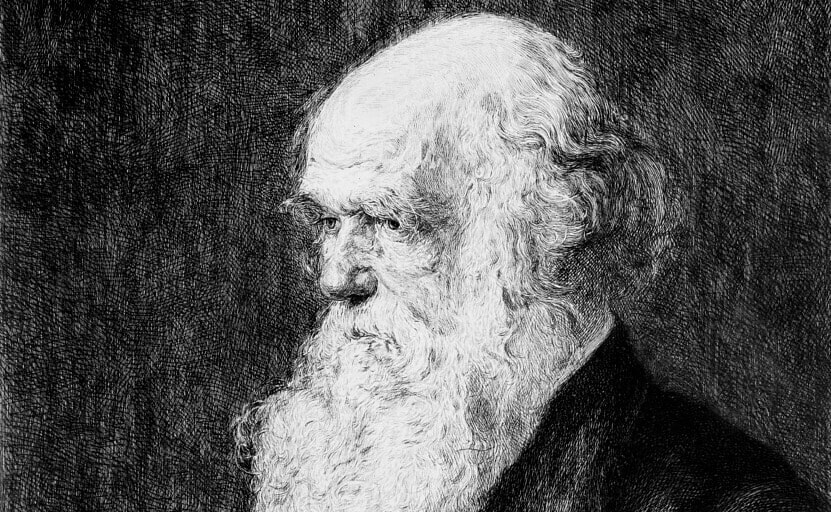When you turn 40 years old, there are several times you think back to decisions you made throughout those years. Ever since I can remember, I knew I wanted to be a doctor. Medicine was always a part of my upbringing. My father was a physician and I was exposed to a hospital setting at an early age due to my diagnosis of a neuromuscular disease. This constant exposure to medicine spurred my curiosity of how I could achieve my dream of becoming a doctor. As I began my career path, I started to take on more of an active observer role when I was a patient while pursuing my education. I took several social science courses that were based in medicine. Everything I studied had a health angle. When I finally admitted to my physicians and family that I wanted to be a doctor, I was met with mix responses. Some were excited while others were concerned.
When I approached a close physician friend of mine about my career goal, he quietly asked me a question that had a lasting effect on me: “What makes a good doctor?” I was immediately taken aback by his question. As he turned to leave the room, he stopped and said, “just think about it.” Should he not be telling me what makes a good doctor? He is the physician, not me, how should I know? I went home and started to reluctantly do what he suggested. Anyone who knows me knows that sending me off to think is like encouraging me to brood. After countless hours of going through the numerous possibilities of what he intended by his question, I finally understood what he meant.
What makes a good doctor?
I sat in my room and listed all the criteria of what I thought makes a good doctor. As I objectively reviewed my responses, I realized that several of the items mentioned were activities I could not physically do. This was a very powerful exercise for me to go through. Rather than feel less than a person, I gained a deeper insight into who I am and what I value in life. I wanted to be a good, no–a great physician and in order for me to embrace this role, I would not be happy becoming a doctor with my physical abilities. To this day, when my physician friend and I are mentoring doctors-in-training together, he asks them the same question.
Due to my newfound perspective, I chose to be part of the medical field in a different way. Since then, I have assisted countless people that have answered this question and have either become a doctor or entered other fields. In anyone’s career journey, there will be someone that will force you to rethink your values and requirements in life. This jolt of insight took place once again when I met Jane.
Jane Shaw is in her mid twenties and is finishing her fourth year of medical school in Europe. My younger sister introduced her to me when they were attending the same university. My sister thought I could be of service to Jane since I owned and operated a consulting firm that assisted medical graduates locate residency programs. Although Jane was still an undergraduate, my sister thought we had many things in common. Jane was diagnosed with the same neuromuscular disease as mine and her love for medicine stemmed from an early age. There is some variation in how this diagnosis affects the individual, but as a whole the physical limitations are the same. Both of her parents were immigrants from Europe and Asia and are physicians. She was surrounded by a medical culture since birth. As far back as she remembers, Jane wanted to be a doctor, in fact she wrote a childhood essay declaring how she wanted to be a neurosurgeon.
She has since altered her attentions and has chosen to pursue a specialty in Psychiatry. I was challenged in how to approach this young lady. I was rather reluctant to meet someone that was so close to my own professional journey. I worried about whether I could objectively discuss her career aspirations.
In the photo: Patient with Psychiatrist. Photo credit: Flickr/US Army
A way to ease my concerns in meeting Jane was to keep it informal. At this time, it did not occur to me to ask her the same question my doctor friend asked me since Jane was technically not a client. I was there to listen and not give my professional advice. It was clear Jane had the extreme intelligence that is necessary to complete medical school and enter a residency program. Her coping skills seemed intact since she managed several challenging events throughout her young life.
Related article: “UNEXPECTED OUTCOMES: BECOMING A NEUROSURGEON AFTER HAVING NEUROSURGERY“
The main concern I have and I believe many folks in the medical field have, is the ability to conduct physical tasks that are required to proceed through training in order to be a licensed physician and lead a successful medical practice. Jane can only perform a physical exam with assistance while the patient lay in a certain position, she cannot enter an operating theater without having a sterile chair available, and she cannot perform a pelvis exam. She vividly explains how she performs a physical exam “instead of deep palpation of the liver to check for hepatomegaly, I use the “scratch technique”: placing the stethoscope on the abdomen, scratching the abdomen, and detecting where there is a change in the sound heard at the border of the liver. Percussion of the lungs works with a similar technique. I think this illustrates the principle that it is not the physical exam itself that counts, but rather knowing what one is looking for, and figuring out how to get the same results in a different way. I was inspired by a particularly resourceful internist in the US who encouraged me to find alternative ways for the same result.”
As a Psychiatrist, the aforementioned acts are not always necessary to treat a patient. In order to obtain a license to practice Psychiatry, however, the doctor must proceed through four years of medical school (depending on the country) and four years of residency (if the psychiatrist wishes to subspecialize, there are additional years of training). During this time, the student must take several rotations such as internal medicine, surgery, and pediatrics so as to become a well-rounded doctor. It is within these rotations that the physical demands become more evident. Once Jane finished her undergraduate schooling, she sought acceptance into an American medical school. She applied to many schools in the United States, but she was wait listed at only two.
Due to her father’s European status, she was able to gain acceptance at a medical school in Eastern Europe. Jane did not waiver in her decision to move to Europe and change her life. She now had to hire an assistant to live with her and care for her daily needs in a foreign country where she did not speak the language. In order for her to conduct a detailed and thorough history, Jane had to gain a proficient understanding of the language. She had to find a building that allowed her wheelchair easy access to her apartment. Since there are limited amount of laws that force public facilities to make their buildings accessible, some of her classes are located in buildings that are up flights of stairs. For these classes, she has to be carried up several stairs in order to attend. This transfer of chairs is often done in front of her peers and she admits it is often embarrassing. Due to the lack of accessible public transportation, Jane has to wheel her chair through inclement weather to get to her classes. She is of the mindset that this all part of the process of becoming a doctor.
Due to Jane’s wheelchair use, patients and hospital staff often confuse her for a patient. A way to combat this quick judgment is wearing her white coat when she is in a clinical role. Clinicians often use the white coat as a sign of status and distinction. Medical students garner short white coats that land on their hips and once the students graduate, they are expected to use the long white coat that reach their knees. Unfortunately, Jane is unable to remove her coat off and on unless she asks a fellow peer. Her personal assistant is not always with her and she has to occasionally rely on peers to help her with physical tasks. This has often impeded her from either wearing the coat where appropriate or keeping it on throughout her day. The constant judgment and obstacles that the medical field has placed on her has not altered her conviction to become a doctor.
In the photo: Medical students in white coats. Photo credit: Flickr/Loyala
When applying to medical school, she felt that her disability would give her an unique perspective as a future physician. During an internship at the National Institute of Health (NIH), she had lunch with a foreign medical graduate that was conducting research in the same lab Jane was working. Jane asked her opinion about becoming a doctor and was quickly dismissed of the idea. As usual, Jane always takes a reflective view of her disability and how the medical profession views her. She is very reluctant to see her inability to gain entry to an American medical school as an automatic fault of her disability. It is important for her to point out that all the applicants were in the same position as she was and she was not privy to their abilities. Jane does not believe that there is a clear definitive reason why she was not accepted into an American medical school.
For a full mindmap behind this article with articles, videos, and documents see #whitecoatonwheels
The idea of taking legal action to gain entry into an American medical school never crossed Jane’s mind. When I was still contemplating applying to medical school, a 26-year-old disabled man named James Post was rejected from ten medical schools and he decided to sue claiming discrimination. This young man was a quadriplegic and needed assistance with every aspect of daily living. He still managed to graduate at the top of his undergraduate class and paid out of pocket for his medical school tuition. The only stipulation he was given by the one medical school that was forced to accept him, was to have a physician assistant at all times with him in order to conduct physical exams. When reviewing my list of requirements for being a good physician, one of my top requisite was providing a physical exam.
The physical exam is one of the first tasks taught when the medical student enters clinical rotations. This act requires utilizing touch, smell, hearing, and sight, hence all the senses. If the physician’s senses are impaired he/she may miss a finding. This limitation could place the patient at risk of an early detection oversight. There are physicians that have successfully overcome an impairment of some sort and led thriving medical practices. Dr. David Hartman graduated from Temple University medical school in 1976 with being completely blind.
The physical exam for many years, was the only tool a physician had (before scans) to diagnose patients. Jane smartly reminds me that a physician assistant and a nurse practitioner are the ones to do the majority of physicals in the current American healthcare system. I remind her, that she is still legally responsible for the outcome of that exam.
In the photo: Patient receives a physical exam. Photo credit: Flickr/Seattle Municipal Archives
It is Jane’s intention to obtain a residency program in the United States upon graduating from medical school. She is all too aware that she will be in the same place as countless other foreign medical school graduates. The openings for these graduates are less than American graduates due the limited availability of slots in each residency program. I am overcome by her perseverance and tenacity. She is determined to get through what she considers her vocation. Medicine was always a part of her life either as an observer or a student. Her parents wanted her to follow her dreams, but they did suggest other professions as options. They did not want her to choose a specialty such as Psychiatry because it is convenient for her due to her disability.
Jane does not waver on her decision on becoming a Psychiatrist. She believes that Psychiatry has some similarity to neurosurgery. Neurosurgeons deal with the intervention and mechanical parts of the brain while Psychiatrists address the theoretical, pattern-recognition part of the brain. Since Jane is well into her training as a physician, I finally decided to ask Jane the same question my doctor friend asked me nearly 15 years ago: “What makes a good doctor?”
Once again, Jane does not cease to amaze me with her response. She pauses thoughtfully to think about this question and starts to list attributes she possesses rather than actions that are required to be a good doctor. Her focus is on intellectual ability and skills that are necessary to form during training. As I listened to her answer, I realized that this question truly is different for everyone and there is no right or wrong response. Medicine is a field where many clinicians believe that they were called to this profession and because of this sentiment; the way an individual chooses to practice medicine must be personalized.
Since Jane believes she will be a good doctor she will therefore be a good doctor. She is taking all the steps to ensure she will be a well-trained medical practitioner. The way I would choose to practice medicine would not be the same way Jane would choose to practice medicine. What I place as priority in medicine is not important to Jane, thus she is comfortable entering a field that she will have to make major accommodations.
Turning 40 was a wild ride. I am extremely thankful for what Jane and my doctor friend taught me: make sure you figure out what your true dream is and do not let anyone or anything get in your way.
Recommended reading: “WHY IS IT SO DIFFICULT FOR DISABLED PEOPLE TO BECOME DOCTORS?“
_ _
EDITOR’S NOTE: THE OPINIONS EXPRESSED HERE BY IMPAKTER.COM COLUMNISTS ARE THEIR OWN, NOT THOSE OF IMPAKTER.COM.
Featured Image: Flickr

















